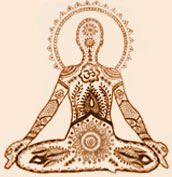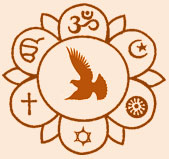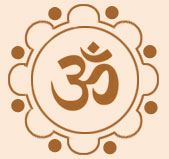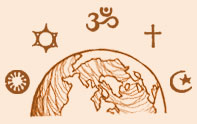One of the important discoveries made in ancient India was that the universe arises from and is sustained by infinite consciousness called Brahman. It has both impersonal and personal aspects. The personal aspect is known by different names, such as God, Ishvar, Jehovah and so on. Realization of this Ultimate Reality is the true goal of life, for that alone can give us everlasting fulfillment and peace.
Brahman is immanent in all beings as the Atman which is man’s true self and source of all happiness. But owing to ignorance, he identifies himself with his body and mind and runs after sense pleasures. This is the cause of all evil and suffering. As ignorance is removed, the Atman manifests itself more and more. This manifestation of potential divinity is the essence of true religion.
The removal of ignorance and manifestation of inner divinity leading to God realization are achieved through Yoga. There are four main Yogas: Jnana Yoga (Yoga of Knowledge); Bhakti Yoga (Yoga of Devotion); Raja Yoga (Yoga of Meditation); Karma Yoga (Yoga of Work). Each Yoga is an independent means of realizing God. But since each Yoga involves the cultivation of one of the faculties such as reason, feeling or will, a combination of all the four Yogas is necessary for the development of a balanced, ‘fully functioning’ personality. It is this synthesis of Yogas that Swami Vivekananda regarded as the ideal of Ramakrishna Math and Mission. This ideal finds expression in the EMBLEM of the twin organizations shown here, which was designed by Swamiji himself. In the emblem the wavy waters represent Karma Yoga; the lotus flower represents Bhakti Yoga; the rising sun represents Jnana Yoga; the coiled serpent represents Raja Yoga; and the Swan represents the Supreme Self. The meaning of the ensemble is: by the combined practice of all the four Yogas the Supreme Self is realized.

According to Swami Vivekananda, weakness is the main cause of immorality, evil and suffering in life, and the cause of weakness is ignorance about one’s true nature as the Atman. Knowledge of the Atman gives us tremendous strength to overcome our weakness and lead a virtuous life. Everyone is endowed with so many potentialities, but owing to fear and weakness, most of these potentialities remain unactualized. When, through knowledge of the Atman, fear and weakness are overcome, these potentialities manifest themselves. Swamiji called this process ‘man-making education’.
Although the idea that ‘one Reality is known by different names’ (Vedas) and the idea that ‘different spiritual paths lead to the same goal’ (Gita) are found in the Hindu scriptures and in the teachings of several Hindu saints, Sri Ramakrishna was the first person in history to show through direct experience the transcendental unity of all religions. His message implies two kinds of religious harmony: harmony within Hinduism and harmony among world religions.
According to Swami Vivekananda, weakness is the main cause of immorality, evil and suffering in life, and the cause of weakness is ignorance about one’s true nature as the Atman. Knowledge of the Atman gives us tremendous strength to overcome our weakness and lead a virtuous life. Everyone is endowed with so many potentialities, but owing to fear and weakness, most of these potentialities remain unactualized. When, through knowledge of the Atman, fear and weakness are overcome, these potentialities manifest themselves. Swamiji called this process ‘man-making education’.
It should be noted that Sri Ramakrishna recognized the differences among religions but showed that, in spite of these differences, they lead to the same Ultimate Goal. This is the meaning of his famous maxim, Yato mat, tato path, “As many faiths, so many paths”.
Apart from this, Swami Vivekananda also held that the religions of the world are expressions of one eternal Universal Religion. Since Vedanta contains all the basic principles and laws of the spiritual world, Swamiji regarded Vedanta as that eternal Universal Religion. That is to say, Vedanta can serve as the common ground for all religions.






